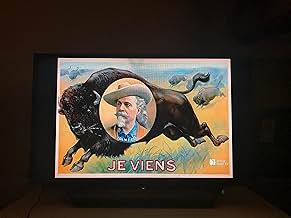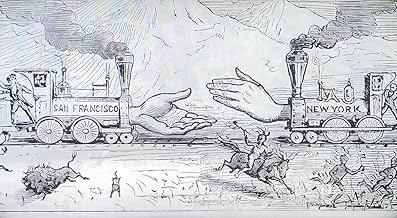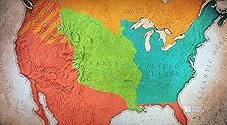Eine Reise durch mehr als 10.000 Jahre nordamerikanischer Geschichte und durch einige der berühmtesten Landschaften des Kontinents, die die Entwicklung des Säugetiers nachzeichnet.Eine Reise durch mehr als 10.000 Jahre nordamerikanischer Geschichte und durch einige der berühmtesten Landschaften des Kontinents, die die Entwicklung des Säugetiers nachzeichnet.Eine Reise durch mehr als 10.000 Jahre nordamerikanischer Geschichte und durch einige der berühmtesten Landschaften des Kontinents, die die Entwicklung des Säugetiers nachzeichnet.
- Stoffentwicklung
- Hauptbesetzung
- Auszeichnungen
- 1 wins total
Folgen durchsuchen
Empfohlene Bewertungen
This documentary shook me to my core and should be required viewing in all American schools and universities in my humble opinion. I had not felt this particular way since I walked out of the Native American Smithsonian museum some years back. Sadness, guilt, anger, confusion, disgust.
The stain of genocide, slavery, imperialism and colonialism wrought on the planet and humanity by Europeans and Americans will never be washed away. Infinite and never ending shame to those that participated in it.
Ken Burns is a national and global treasure for his story telling abilities. This documentary is no different from his others, in its clarity and brutality of telling the cold, hard, historical truth.
The stain of genocide, slavery, imperialism and colonialism wrought on the planet and humanity by Europeans and Americans will never be washed away. Infinite and never ending shame to those that participated in it.
Ken Burns is a national and global treasure for his story telling abilities. This documentary is no different from his others, in its clarity and brutality of telling the cold, hard, historical truth.
10jmlj99
Hard to watch? Yes. It is heartbreaking. I started watching the show with my husband, it was very depressing, but the story and the history needed to be told and shared. We all need to know and remember how people wiped out the Native Americans and the lands and the buffaloes that sustained them. It's so hard to believe that people could not respect the land and lives of others in the past. That was the way in the past. Take what you want and who cares about the feelings and the lifestyle of the natives. I'm glad I'm in my 60's and it saddens me to see that we the American people still don't recognize how badly we screwed the native population.
10mdh627
I am from Cincinnati. Each time I visited our zoo I stopped at the statue of Martha, the last passenger pigeon to survive the massacre of her species. She died here all alone. It makes me cry each time I think that of the millions of her kind she was all alone at the end, with no way to pass on to a new generation.
I cried in this show, too. Seeing the hunters sitting atop that huge mound of buffalo skulls was disturbing. And also the horrible accounts of the treatment of native Americans. Thank God for those wonderful people who persevered in their mission to save this wonderful creature. It's a shame the government wasn't as kind to the different tribes.
I cried in this show, too. Seeing the hunters sitting atop that huge mound of buffalo skulls was disturbing. And also the horrible accounts of the treatment of native Americans. Thank God for those wonderful people who persevered in their mission to save this wonderful creature. It's a shame the government wasn't as kind to the different tribes.
The drive to near extinction of the American buffalo was perhaps inevitable: technology has given mankind many options to exploit nature, but without the sense of restraint to do so sustainably. What's shocking in this documentary is not just the speed with which the buffalo were exterminated, but that everyone could see what was happening and did nothing to stop it. They could also see that the end of the species would end the traditional way of life of the native human population; mostly, Americans of European ancestry saw this as a good thing. The second part tells the story of how the buffalo was saved; but it could be argued that the peoples who depended on it have never recovered. There's a warning here for all of us today as we face climate change: might we once again walk eyes-open into environmental catastrophe, not appreciating what we have until after it has gone?
I just finished watching The American Buffalo and once again Ken Burns hits it out of the park! I thought I knew the plight of the Bison, and how it also impacted Native Americans, but I learned much more about the history of the past 200 years. This is a very touching and thought provoking documentary and reminded me of the photo of a huge mountain of bison skulls I first saw as a child. I'd never even heard of the amazing meter shower of the 1880s or of the horrid Gore who killed thousands of animals just for fun. I'm looking forward to part 2 tomorrow night. At least enough calves were saved that the species did not go extinct. Thank God for Yellowstone Park.
Wusstest du schon
- WissenswertesA hour long conversation preview with Ken Burns and indigenous leaders is hosted by Judy Woodruff on PBS 23 September.
- VerbindungenFeatured in Ken Burns: One Nation, Many Stories (2024)
Top-Auswahl
Melde dich zum Bewerten an und greife auf die Watchlist für personalisierte Empfehlungen zu.
- How many seasons does The American Buffalo have?Powered by Alexa
Details
- Erscheinungsdatum
- Herkunftsland
- Offizieller Standort
- Sprache
- Auch bekannt als
- The American Buffalo
- Produktionsfirmen
- Weitere beteiligte Unternehmen bei IMDbPro anzeigen
- Laufzeit3 Stunden 54 Minuten
- Farbe
Zu dieser Seite beitragen
Bearbeitung vorschlagen oder fehlenden Inhalt hinzufügen




























